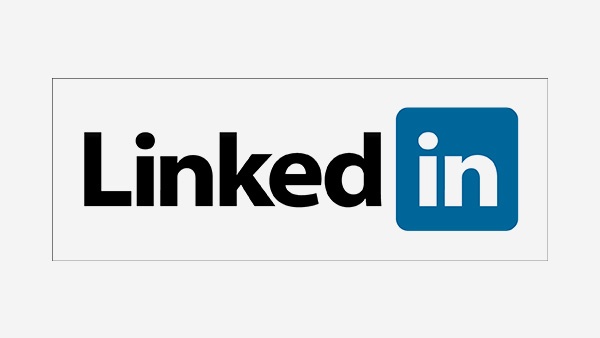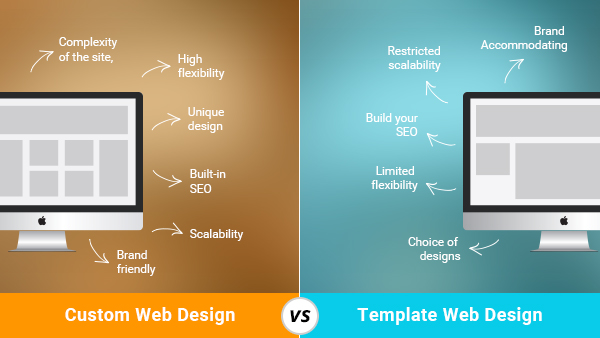Posted by Kerrie Brooks in General on September 21st, 2016
If you have a LinkedIn Company Page but are not actively using it, you’re missing a trick. With over 450 million registered members, this business-orientated social networking platform is prime internet real estate for engaging B2B audiences, generating leads and building customer relationships – when you know how to work it.
Taking our cues from the top LinkedIn performers – such as Microsoft, Google and Forbes – here are ten things you should be doing to extract the most value from your page.

1. Designate an administrator
This is the most important step as all too often Company Pages disappear into the LinkedIn abyss. By putting someone in charge, you can ensure your page stays fresh, active and visible in newsfeed. Give your administrator the responsibility to make edits, post updates and ask and reply to questions on your behalf – but make sure you’re communicating regularly on strategy.
2. Brand it
To build recognition and trust you need to communicate a consistent image. Therefore it’s important that your LinkedIn Company Page is on-brand. Achieve this by adding your logo and sticking to your brand colours, fonts and tone of voice.
Your cover image is a critical feature of your page and should always be something brand relevant – but be sure to change it regularly. Not only will this add visual interest to returning visitors but it can also help promote different aspects of your business.
3. Make sure it’s complete
This means filling in all the available sections, including your company size, type, founding date, URL, ‘Specialities’ and a short, comprehensive ‘About’ description. The more information you provide, the more credible you look and the better chance you have of getting prospective customers to connect.
In addition, create some boilerplate company copy your employees can use on their own profiles. This will help keep your brand message consistent across the LinkedIn platform.
4. Use Showcase Pages
These are essentially subpages of your Company Page which you can use to promote a specific product line, service or even an event. Set up alongside your main page, each of your Showcase Pages can attract its own followers, publish its own status updates and feature unique functionality. The benefit? You can create more targeted communications – the key to marketing success.
5. Post updates regularly
According to LinkedIn’s 2015 findings, 99% of the top performing companies on the site are posting regular updates with an average post count of 12.6 per week. Whilst you don’t need to post quite that often to reap the benefits, you should be aiming for around three or four a week.
While this may seem like a lot, it’s actually pretty achievable when you mix fresh content (blogs, videos etc.) with curated posts, company insights, quotes and targeted questions. Plus the variety will help keep your followers engaged.
6. Ask employees to share your posts
As well as publishing posts from your Company Page, get your employees to share them – again something 99% of the top LinkedIn companies are already doing. Why does it work? Because the more people who share your post the more people will see it and the greater chance you have of attracting new followers and gaining new customers.
7. Include your SEO words
It’s not just your website that can be optimised for search. By boosting your LinkedIn Company Page with keywords, you’re facilitating another opportunity to get your business seen in the Google results pages. To get it right, add long-tail keywords throughout your company description as well as in the ‘Specialities’ section. It’s a quick and easy way to drive more traffic to your page.
8. Join industry groups by proxy
Whilst you can’t join groups from your Company Page, you can ask trusted employees to join them for you. LinkedIn Groups provide a place for professionals in the same industry as you to share content, find answers, make business contacts and establish themselves as experts.
Encourage your employee members to be active listeners, as well as to contribute to timely conversations. This will both keep you informed and help boost your brand.
9. Try LinkedIn advertising
This is highly recommended for B2Bs looking to spark the interest of other business owners and professionals. You can choose from a range of ad formats from Sponsored Content and InMail to Dynamic, Text and Display Ads. Not only does it offer tight, customised targeting allowing you to choose audiences based on company size, title, industry and geography, it’s also easy to set up.
10. Measure your performance
Regularly check out the ‘Analytics’ tab to see how engaging your individual posts are. You can also identify trends across key metrics and understand more about the demographics of your followers and sources of traffic. Through these insights, you’ll be better informed to make changes to improve the effectiveness of your page.
When well-managed, your LinkedIn Company Page can be a real asset and a great way to boost your marketing efforts. But to become a top performing LinkedIn company you’ll need to be committing time and effort on an ongoing basis.
Posted by Kerrie Brooks in General on September 5th, 2016
Choosing the right web design agency is critical for you future online marketing success, so it pays to get it right. What they offer and how they offer it can either help your business grow or leave it lost to the digital wind.
With your list of contenders in hand, it’s time to work out who makes the cut. To help you do this, here are the top ten questions you should be asking before you make that hire.

1. What services do you offer?
It’s important to establish first off whether they do exactly what you’re looking for. Obviously they design websites but how far does their expertise extend? Are they limited to template designs or do they do custom-built? Are they skilled in e-Commerce? Do they offer responsive sites as standard?
In addition, find out what services they offer besides fundamental web design – from copywriting to SEO optimisation, logo design and web hosting. Having it all done by the same company will certainly make life easier, but be sure to check the level of skill in each area.
2. How do you price your services?
Knowing how much your website will cost all up and how you’ll be billed is vital. Many web design agencies offer a total price for the finished project whilst others may charge by the hour.
If you’re offered a set price, ask for a breakdown so you know exactly how it’s calculated and what’s included. Many agencies offer packages which include a range of additional services. Ultimately, you want to be clear that no hidden costs will pop up along the way or once the site is completed.
3. Can I see your portfolio/case studies/references?
You’d be crazy to start working with an agency without concrete evidence that they can deliver what they say they can. Any agency of substance should have a portfolio of work they’re more than happy to share with you – including live websites you can explore.
But while a portfolio can prove design and development ability, you need more than this to make a decision. Ask for case studies of projects they have worked on, and look for statistical information on how their websites perform. And don’t forget to ask for references so you can get a feel not only for the quality of their work but also a sense of what they’re like to work with.
4. What’s your process and turnaround time?
It’s likely you’ll already have an idea about how soon you would like your website to be up and running, therefore it’s important to find out the approximate turnaround time of your project. Four to six weeks is average for a build, but this can vary considerably depending on the agency, plus you should factor in more time for planning.
Being clear on the process is also important. As well as requesting a rundown of the basic workflow, be sure to prompt for further information about the initial consultation, the level of research carried out, who will be involved at each stage and how much involvement will be required from you.
5. What do I need to provide before you get started?
As well as stating your needs and requirements, it’s likely you’ll have to provide a number of other items before your web design can get underway. This can include things such as background information on your business, existing marketing material, logo files, copy, images etc.
The reason you need to ask this question is so you know how much time you will need to allocate to the project and, more importantly, to help establish expectations from the start.
6. What happens if I don’t like the initial design?
If an agency has sufficiently consulted with you throughout the process, there should be little discrepancy between what you had hoped for and the final website design you receive. However, it pays to know upfront what the process would be if this situation occurred.
Most agencies will include a number of rounds of revision within their initial pricing, so minor tweaks and changes should be fine. If, however, the whole concept and delivery is not as expected you should be well within your rights to question why it isn’t.
7. Who will own my website once completed?
There are three main elements to getting a website up and running: creating a design, registering a domain and setting up hosting. Importantly, ownership of each of these elements is not a given just because you have paid an agency to create your site so find out from the start what the status quo is.
Often you will own the HTML/CCS/Javacript – the building blocks of your site – as well as the visual design. However, some agencies may choose to retain ownership and simply hand the licence over to you. Your domain is either registered to you or the agency and they may or may not manage your hosting.
8. How will I update the content on my site?
Once you’ve got to the bottom of everything that is involved in getting your website up and running, you need to focus on what happens after it goes live. As any half-decent online marketer knows, creating a website and then leaving it to do its magic just won’t do. Instead you need to be constantly checking, updating and adding new content.
In some cases changes may have to go through the agency at a cost – unless you have the technical knowhow to revise the coding. Alternatively, a content management system (CCS) enables you to easily make changes via a select and click interface. Ask whether this is something they can provide.
9. Do you offer ongoing maintenance?
As well as keeping your content fresh, your website should be regularly monitored and updated to ensure all the technical aspects are working efficiently. Carrying out plug-ins checks; doing backups; fixing errors with hosting and servers; making enhancements to useability; performing upgrades; these are all things you need to consider.
Knowing whether or not the agency you are speaking with offers these services is important as if they don’t you’ll need to start thinking how you plan to do it.
10. Who will be my primary source of contact?
Last but not least, it’s important you know who you need to contact if you have a question, suggestion or issue at any stage of the process. Depending on the agency, you could be dealing predominately with the designer, or you might be given a project manager who will be responsible for communicating your message to the relevant person.
Whoever it is, be sure you have a name, relevant contact details and know when the best times are to contact them.
When asking these questions, remember there’s no right or wrong. You’re just trying to establish whether or not this particular web design agency is a credible, working fit for your business.
Posted by Kerrie Brooks in General on September 5th, 2016
Setting up an eCommerce store is an exciting step in business. However if you want to attract those online customers and convert browsers into buyers, it needs to be done right. Here are 12 essential attributes any site which sells should boast.

1. Fast load time
According to a study by Akamai, 40% of visitors will abandon a web page if it takes more than 3 seconds to load. In addition, 14% will start shopping at a different site if page loads are slow and 23% will stop shopping or walk away from their computer.
To ensure you keep your page speed high, there are a number of things you can do including: sticking to a simple design; using Gzip compression to reduce file size; enabling browser caching; minimising the use of plugins and redirects.
2. Clear, easy navigation
If a person can’t find the product they’re looking for on your site, they can’t buy it. In addition, customer satisfaction levels are greatly improved if the process is quick and efficient. Therefore, ensuring your e-store is easy-to-use and explore is vital.
What makes for a good user experience? Standard top and sidebar navigation; meaningful, clickable labels; drop downs for sub categories; and the inclusion of a search box.
3. Appealing aesthetics
A visually appealing eCommerce store not only has the ability to attract visitors and keep them on page, but it can also make a powerful positive impression regarding the kind of brand you. However, whilst looks matter useability matters more.
The key to success is keeping it simple, but beautiful – with clean lines and fonts and clever juxtaposition of colour and whitespace. While slick elements and moving graphics may look great, if they’re making your site harder to use, forget them.
4. Efficient shopping cart
An e-shopping cart enables efficiency. By letting customers store and manage multiple items, purchases can be tallied up and paid for in a single transaction. However, if poorly designed, customers can get deflected into cart abandonment – there goes that sale.
A common reason for abandonment is customers being forced to register their personal details before completion. To avoid this, offer users a ‘guest checkout’ option or clearly lay out the steps so they know what stage they’re at. In addition, be sure to include clear calls to action throughout.
5. Secure payment network
A payment network is the link between your eCommerce site and your merchant bank. It authorises your customers credit and debit card payments – much like a cashier at a physical store register. Whilst necessary for online transactions, it can be another cause of cart abandonment if not properly set up and secured.
Online customers want to know their details will be kept safe, so smart eCommerce sites follow industry best practice and ensure their gateway keeps personal data encrypted and protected. How? By obtaining and installing an SSL certificate.
6. Strong social elements
Customers today are reluctant to buy without first seeking reassurance from others. So, to ensure online shoppers convert to buy, you need to offer multiple avenues to satisfy this need.
Firstly, be sure to include social media links so people can like, share and tweet about their experience with your products. Secondly, set up product reviews and include customer testimonials. The more positive social proof you get, the higher the perceived level of trust – the key to that sale.
7. Clear imagery and descriptions
In the absence of seeing and touching a physical product, online shoppers have to rely on photographs and written descriptions. The importance of these two elements cannot be understated. Ultimately, if a customer can’t get an adequate sense of what a product is like, they’re unlikely to buy.
Sites that get it right use clean professional photography with multiple images for a single product to allow for different angles. In terms of the copy they keep it scannable, benefit-focused and personalised to the reader.
8. Effective calls to action
Even if your storefront looks great and runs smoothly, if people don’t know where to click you’ve got a problem. This is where call to actions come in. They tell visitors what to do, where to click and what to buy. Examples include ‘Shop now’, ‘See more products’ and ‘Proceed to checkout’.
According to Shopify – one of the leading eCommerce software providers – a good CTA contains urgency, has a clear button that stands out and is placed above the fold. Images can also be effective CTAs, tempting people to click.
9. Multichannel customer support
Providing an exceptional service experience in a timely, professional manner is critical to the success of your business. Nothing is more frustrating than a website that has no clear contact details and tries to send you through lengthy FAQ channels.
The key to getting it right is offering customers a range of options to get in touch. As well as a phone number and email address, a live chat feature is one of the most effective channels. Based on a study by Bold Software, eMarketer report that 63% of customers were more likely to return to a website that offers this feature.
10. Offers, deals and discounts
Shoppers love to pick up a bargain – just think how spend-happy people get on Black Friday. So if you’re not offering deals and discounts on your eCommerce site – from percentage-based reductions to coupon codes, free shipping and freebies – you’re missing out.
To facilitate this you should run a discount engine on your site. Many eCommerce platforms come with one already included. Through this you can set up and manage a whole variety of promotions quickly and easily on your e-store.
11. Mobile responsiveness
Every year more and more people are taking to their phones to go shopping, so if your online store doesn’t offer a mobile-optimised buying experience you’ll be left behind. In fact, according to a BI Intelligence report, by 2020 mobile commerce will make up 45% of total e-commerce.
Why is responsiveness important? Because if your site isn’t it will likely be slow to load, have an awkward layout and demand zooming and scrolling to read the text. None of these are conducive to happy visitors and will significantly discourage them from converting.
12. SEO optimised
Just like any website, your eCommerce site needs to be SEO optimised to succeed. Why? So it will rank higher in the search engine results. Including the right keywords in the right place is essential, as is ensuring your site is well-structured, easy to navigate and quick to load.
Many of the previous attributes recommended in this post will boost your efforts. In addition, creating a company blog will give you the opportunity to upload regular, relevant content – another tick in the SEO box.
Even though you might be keen to get your eCommerce site off the ground, don’t rush it. Take the time to get it right and your business will reap the rewards. Importantly, be sure to test every element before, during and after launch and continue to evolve in line with customer needs.
If you want help setting up or enhancing your eCommerce site, contact us today.
Posted by Kerrie Brooks in General on August 9th, 2016
As well as nailing the content, getting the timing of your emails right is critical to success. According to email marketing software company Campaign Monitor, 80 per cent of email opens occur within the first 48 hours of an email being sent, so if you don’t get it right, yours will likely get lost in the inbox abyss. But when is the best time to click send?
Unfortunately, there is no definitive answer. The reality is that the best email send time for your business very much depends on your industry, your audience and how they spend their day. But don’t click away in frustration just yet. Here is what every beginner needs to know to get it right.

Start with the generalisations
When you’re trying to work out the best time for your business to send emails, it’s pretty hard to work from scratch – luckily you don’t have to. Although research on the subject varies from one source to the next, the following have traditionally performed well and been touted as best practice.
Best days: Tuesday, Wednesday, Thursday
Best times: 10am-2pm
But while this provides a good starting off point, these days and times will not work for all businesses as there are many other variables to consider.
Pay attention to the trends
A change in email consumption patterns is opening up new timeframes. Whilst mid-week, mid-day makes sense for people opening emails on their laptop at work, this is no longer the only scenario.
According to Experian’s 2016 Q1 research, 59 percent of total email opens occurred on mobile devices. This means that people are now increasingly checking their inbox throughout the day, more specifically, as soon as they wake up and before they go to bed, making 6am and 8-12pm key times.
In addition, weekends, which were generally off limits, are demonstrating higher open and click-through rates.
Take your industry into account
Understanding the specifics of your industry can further inform your optimum send time. It only takes a bit of common sense to understand that what might work well for some industries will not work well for others.
While B2B companies might fare better mid-week, mid-day, an entertainment or retail business could experience higher rates in the evenings and at weekends, when people are in that mindset.
Industry also has an impact on the device being used to access emails, and in turn the time. According to research by Knotice, consumer services has the highest percentage of total opens on phones at 42 percent, whilst health care 20.65 percent, consumer products 26.41 percent and associations 24.95 percent have the lowest.
Tailor it to your target audience
Understanding the demographics of your audience, such as their age, gender, occupation, income level etc. is critical to email marketing success. Not only does it enable you to create relevant email content that they are more likely to engage with, but it also gives you insights into their email behaviour.
Here are some stats to consider:
Think about the life of your audience and imagine when they might have a free moment to read or act on your email. Do they have a certain job, family commitments or other habits that might shape when they check them? And don’t forget to segment your audience for best results.
Consider your objective
Giving attention to why you are sending a particular email should also guide your send time. Are you delivering an informative or educational newsletter which requires no action? Or are you hoping for a reply or click-through?
According to an infographic by Smart Insights which uses data from Customer.io and Forbes, if you are looking to increase your open rates, 12pm-4pm on a weekday is a good time. Whereas if you want a response, try 6-8am or 8-12pm – the times with the lowest email volume and when people have time to read them.
In addition, the best recommended days to send an actionable email are Friday, Saturday and Sunday when people again have more time – dependant on your industry and the habits of your audience.
The importance of split-testing
As with anything in marketing, the only way to know for sure when the best time to send emails for your business is to A/B test. Best practice generalisations are a good jumping off point. Try sending an email out on a Tuesday at 10am then another on a Thursday at 2pm? And, depending on your trade, you could try early morning or late at night on an off peak day.
When you get the results, splittesting.com is a useful online tool that allows you to determine whether your open and click-through rates are statistically valid.
Timing isn’t everything
It’s important to remember that bad open and click-through rates may not necessarily be down to timing. Other factors also contribute to the success or failure of an email campaign. Is your subject line and copy strong enough? Are you bombarding people with too many emails? Is your email mobile friendly?
What are your thoughts or experiences?
Posted by Kerrie Brooks in General on June 17th, 2016
When it comes to creating a new website for your business there are two main approaches you can take: template or custom-built. Both have their advantages and disadvantages but which one should you choose? The answer largely depends on the size of your business, how much you are prepared to spend and your expectations about what you hope to achieve.

What is a Custom Website?
A custom website is built from scratch using a combination of web design and development. The design element focuses on the aesthetics and useability of the site and is produced in a programme such as Adobe Photoshop or InDesign. The development stage turns the design into a fully functioning website using a combination of HTML, CSS, Javascript, PHP and other coding languages.
Custom websites are usually the reserve of professionals. A good web designer/developer will spend time with their client getting to know their business and understanding what their specific needs and requirements are. The website will then be created accordingly.
What is a Web Template?
A web template, on the other hand, is essentially a pre-designed webpage, or set of web pages, in which you can add or ‘plug-in’ your own content. When you start with a template, rather than from scratch, all of the technical backend coding (development) and frontend structure (design) necessary for your website to function is already in place. Customisation is possible, but often limited or skill-set dependent.
There are two main template options:
1. Set up a content management system (CMS) platform, for example WordPress.org or Joomla, then apply a theme or template purchased from a site such as Themeforest. This option requires setting up your own web hosting as well as performing backups and maintenance but can be customised with code and plugins.
2. Use a service such as Wix, Squarespace or WordPress.com. These generally come with free hosting, maintenance etc. but are bound by more terms and conditions which give you less control. This option lets you custom your design but not the site’s functionality which is restricted.
Weighing up the Differences
In order to decide whether custom web design or web templates are the way to go for your business, it pays to consider some of the main differences between the two.
| Custom | Template |
|---|---|
| Set cost – unless you have technical and design know-how you will need to hire in professional web services. They will charge an upfront one-off fee which covers everything including the initial coding and site creation | Hidden costs – template providers sell basic website templates for a minimal fee. However, you will typically spend money on customising and adding content to your template which can add up |
| Agreed timeframe – you know how long it will take from the outset. Depending on the complexity of the site, how much planning has been done and what content has already been created, it can be done in as little as 4 weeks. | Unknown timeframe – some of the basic template based services enable you to set up a site in a matter of days. However, not all are straightforward and it can take time to understand and implement the more complex features |
| Unique design – when a site is custom built specifically for your business your design will be a one-off. This will help you stand out online | Choice of designs – most services offer a wide selection of templates ranging from 100s-1000s. However, every template will already be used by many other businesses |
| High flexibility – in terms of functionality, design and plugins. When you build from scratch you have complete control over how your site looks, what it does and how it performs | Limited flexibility – with a template you are limited on your customisation options both in terms of design and functionality. Whilst customisation is possible, you will likely have to hire in a professional to write coding for significant changes. In addition, templates can break when incompatible content is inserted |
| Built-in SEO – your site can be constructed to be search engine friendly right down to the coding | Build your SEO – many template sites offer built in optimization tools. In addition, you can use plugins and apps to improve your site’s ranking but you have to know how to do it |
| Scalability – not only can implementation happen in stages but as your business grows or changes it is easy to make adaptations when your developer knows your site inside out and has constructed it to make this possible | Restricted scalability – if your business grows or changes many templates are bound by the limitations of their design in how far they can adapt to suit your needs |
| Brand friendly – because your design is completely bespoke, it can be created to better reflect your brand image and values | Brand accommodating – you can choose a template that closely aligns with your brand and add your logo, colour scheme etc. However, many template sites also have their name and branding visible e.g. in the web address or at the bottom of the page |
Deciding What is Best for Your Business
Although many people assume a low cost but professional looking template would be sufficient, as demonstrated, the initial expenditure is not the only thing you need to consider. What you might sacrifice on paying upfront to get a professional to custom build your website from scratch, you gain back in terms of uniqueness, functionality, adaptability and many other features.
Ultimately, which one is best for your business comes down to your needs, goals and budget. If you are just starting out and require a basic website to act simply as an online brochure without complex functionality, using a web template on a site such as WordPress should be more than satisfactory.
However, for the majority of small to medium-sized enterprises looking to make an impact, a custom-built website is definitely the way to go. Not only can you create it to your exact business and branding specifications, but you can also benefit from the ability to add or remove features at any time without hassle.
Posted by Kerrie Brooks in General on June 9th, 2016
To those involved with digital marketing and search engine optimization (SEO), duplicate content is a familiar term. It is also a term which causes angst as your search ranking can suffer if your website includes it. However, whilst many have heard the term and know it is bad news, not all know exactly what it means or what they should be doing to avoid it.
So in the interests of demystifying it, let’s get back to basics. What exactly is duplicate content? Why does Google care? How does it happen? And what can you do to prevent it being an issue for your website?

Google’s Definition of Duplicate Content
According to Google:
“Duplicate content generally refers to substantive blocks of content within or across domains that either completely match other content or are appreciably similar
Posted by Kerrie Brooks in General on May 30th, 2016
With the 30th June fast approaching, now is the time to knock that outstanding marketing budget balance down to zero. If you don’t, not only are you missing a valuable opportunity to boost your year’s efforts but, if someone else is in charge of your budget, you face the possibility of a limited pot of cash next time around.
Whether you have just a few hundred dollars or several thousand to play with, there are plenty of effective ways in which you can spend your leftover marketing money wisely. Here are some suggestions that you can easily implement over the next few weeks.

1. Try ad retargeting
If you’ve still got money to spend, an ad retargeting campaign – a campaign targeted at people who have already interacted with your business online – could produce some good short term results. Why? Because if people are window shopping on your website, they’re already one step closer to buying.
There are many third-party companies who do both web and social retargeting. However you can also do it quickly and cost effectively yourself through a specific platform such as Facebook, Twitter, LinkedIn or Google AdWords for around $500.
2. Experiment with visual content
Most businesses today are engaging in content marketing, but not all are branching out to explore all the available mediums. So instead of just focusing on blogs and social media posts, why not use your leftover cash to try something a little different such as an infographic or SlideShare?
Visual content is a great way through which to engage your audience. Not only do people retain information when visualised with colour images, but infographics are also 3 times more likely to be liked and shared. But remember: hiring a good graphic designer is essential.
3. Optimize for mobile
With most people now accessing the internet on the go, if your site doesn’t translate well from desktop to tablet to phone you run the risk of frustrating and ultimately losing customers due to poor useability. Don’t let this happen. Spend the leftover money in your marketing budget on optimizing your website for mobile.
If you don’t have the technical expertise to do it yourself, hiring a web developer to do it for you will be well worth the cost. Prices will vary depending on how your current site is currently provided. Not only will optimization improve user satisfaction, but, in doing so, it will also boost your SEO.
4. Get some blogs under your belt
Producing quality blogs on a regular basis is not always easy, especially during the busy periods. Rather than waiting until you reach the ‘no blog to publish’ predicament, why not invest the money now into creating a few evergreen pieces of content that you can pull out and upload as and when required?
To produce this type of content you need to write about topics that are continually relevant within your industry. For example, if you are a dentist you could produce a blog on the how-to of good dental hygiene. To hire in an experienced freelance copywriter you should expect to pay around $100-$200 per article.
5. Carry out an SEO audit
Ideally, you should be re-evaluating your website for SEO effectiveness every six months. If this is not a regular spend for your business, investing your leftover budget into paying for an expert to review and update your site would be money put to good use.
Some of the main areas they will focus on include: keywords; content; site useability; load speed; and external links. If your leftover budget won’t stretch to bringing in a professional, there are many paid online tools which you can use to do it yourself including SiteAnalyzer and Screaming Frog’s Spider Tool.
6. Invest in email marketing
According to VentureBeat, email delivers the best return on investment in digital marketing offering up to $38 for every $1 spent – but only if done right. To get it right today you need an email management system to help you manage your subscribers, send emails and track your results. So why not use your spare money to invest in one?
MailChimp and Constant Contact both offer intuitive interfaces and a range of features to help you speed up and professionalise your email efforts. Pricing starts from as little as $10 a month so, whatever money you have left, you should be give it a good trial and see how it works for your business.
7. Thank your loyal customers
It’s common marketing knowledge that retaining customers is a fraction of the cost of acquiring new ones. So why not spend that extra cash on thanking your loyal customers or clients?
One simple yet effective idea is to design and print your own thank you cards which you can send out with a personalised note on their birthday or other occasion. Alternatively, spend it on distributing free ‘brand relevant’ goodies to delight or surprise customers or run a complimentary information sharing event for your best clients.
With so many great ways to effectively spend your leftover 2015/16 budget, it’s time to get a move on. Make every last marketing cent count.
Posted by Kerrie Brooks in General on May 19th, 2016
Increasing the number of clicks through to your website is a job well done. But your job doesn’t end there. If your bounce rate is high or your subscriptions or sales aren’t increasing despite increased traffic, you need to turn your efforts to an even more rewarding task: conversion optimization. With the right tactics, you can significantly improve how many leads convert into paying customers.
Here we take a look at some of the key tactics you should be employing to watch those conversion figures sky-rocket, or at least start heading in an upwards direction.

What is the difference between clicks and conversions?
Clicks are measured in terms of click-through rate, which is the percentage of people who click on your ad or search engine link after seeing it. Conversions, on the other hand, occur when a user completes an action on your site that is considered to be of value. This could include a purchase, subscription, download or request for further information.
A lot of time, money and effort can be poured into increasing your click-through rate – from creating a beautiful website to paying out on online advertising and ramping up your SEO and social media efforts. If your percentages increase, great. But for your business to reap the benefits, you need to go further. This is where conversion optimization comes in.
2. What is conversion optimization or CRO?
Conversion optimization or conversion rate optimization (CRO) is ‘the process of creating an experience for your website visitors that will convert them into customers’ (Hubspot). Conversions can happen anywhere on your website, from your home page to your blog. So, in order to make CRO work effectively for your business, you need to apply conversion optimization universally.
Essentially, conversion optimization is about gently pushing your customers further down the sales funnel – from an eager to find out user to a fully informed prospect ready to take action. Now we’ve covered the what’s and why’s, let’s move into the how’s.
3. Know your target audience to a T
The first and most essential step in turning your clicks into conversions is making sure you have a full and complete understanding of your target audience. This includes identifying their unique persona as well as the different stages of the sales funnel or customer journey they may be on. This last part is important as every customer might be at a different stage and respond differently to certain tactics.
How do you get to know your audience? Use your existing knowledge and research, research, research.
4. Take direct action
The two most obvious areas in which you can focus your conversion optimization are your copy and your calls-to-action (CTAs). These are your sales tactics; your direct opportunities to convince and persuade users to take action. Executed correctly, they can be extremely effective in reaching your conversion goals. Here are some pointers to getting it right:
Copy
To encourage conversions, your copy needs to be persuasive. It needs to educate the user about your product or service, highlight the features and specify strong benefits that will inspire them to take action.
CTAs
Call-to-actions are you gateway to conversions. By understanding what you customer really wants you should be able to create ones that drive action. Be careful you don’t add them too soon into the customer journey – prioritise content first – this way users will be more likely to click.
Best practice when creating a landing page is to focus on converting a highly targeted audience to take one specific action. Because of this, they can be very effective places for increasing conversions.
5. Be more subtle, but just as effective
As well as using direct sales tactics, you can also increase your conversions by applying a range of other more indirect tactics. These methods can drive people to take action by building trust and improving the user experience.
6. Indirect tactics
By employing all or some of these tactics, you should be able to communicate more effectively with your target audience and, in doing so, turn your clicks into conversions and paying customers. Conversion optimization is a continuous process, so make sure you track your efforts, do A/B testing to see what works and keep ploughing on even when you hit roadblocks – your efforts will pay off in the end.
Posted by Kerrie Brooks in General on May 13th, 2016
When it comes to content marketing, most businesses big and small are already either fully on board or at least dipping their toes into it – 81% of Australian organizations according to the latest research by the CMI. And why wouldn’t they be? From improved visibility in search engines to generating new leads, building loyalty and establishing thought leadership, it promises countless benefits.
But to win at content marketing, it’s not as simple as just spawning ideas, creating blogs, articles and other media and distributing it regularly. Success in content marketing, as in any area of business, depends on having a clear strategy in place.
So, before you let implementation run away with you, here are 5 reasons why content strategy is a must.

1. It gives your efforts a clear purpose
It’s no good creating and publishing great content if you don’t have a clear idea about why you are doing it. Yes, you might be reaching your audience and attracting likes and shares but to what end? What are you trying to achieve? This is where content strategy comes in.
Ultimately, are you looking to increase sales, generate leads, build a stronger brand or demonstrate your authority? Whatever it is, by defining clear content marketing objectives, ones that align with your overall business goals, it is easier to drive focused action and produce content that delivers.
2. It saves you time and money
Any business can implement a content marketing plan, but to be effective your plan needs a plan. Rather than just pumping out content for content’s sake, and expending huge amounts of time and money in the process, having a content strategy makes you step back and think before you act.
By helping you more clearly define your goals, your target audience, what formats and types of content engage them and how often and when you should be targeting them, a content marketing strategy can help you better concentrate your efforts and resources where they’ll be most likely to make an impact.
3. It helps you build trust
Consistency is essential in building trust, and this certainly holds true when it comes to content. But maintaining consistency is not easy without a content strategy in place. Because a content strategy looks at the bigger picture it enables you to ensure that all of your content is working together as a whole.
If each piece of content you create follows a central theme, is of the same editorial quality and follows the same voice and tone, not only does it tell a compelling story about your brand, but it also means people know what to expect. Far from breeding contempt, this familiarity will keep people coming back to your business time and time again.
4. It makes implementation easier
Part of content strategy is deciding what people and processes are needed to support content creation and management, including who will be responsible for ensuring it stays on-strategy. This attention to detail when it comes to implementation is vital if your content marketing plan is to run smoothly.
If you are clear on who will be generating ideas for content, who will be producing it, who will be editing it, who will be uploading it and who will be overseeing the process, as well as what resources and procedures are required at each stage, your content marketing efforts have a much better chance of success.
5. It keeps you on track
Because a content strategy makes you clearly define your content objectives and sets out what content you will create, who you will create it for and how and when you will deliver it, it is crucial in helping keep your content efforts on track.
Whilst your digital analytics tools will show you how each piece of content is performing, e.g. number of likes and shares, clicks to website, conversion rate – your content strategy is your point of reference by which you can determine whether you goals are being met. If they’re not, it’s time to revise your strategy.
Although it is possible to plough ahead with content marketing without a strategy in place, having one will not only make implementation easier but will help you achieve your business goals. But importantly, to be effective it must be done right.
A successful content strategy should be: documented; targeted; unique to your business; measured; and cover all distribution channels from your website to social media and beyond. By spending time on your strategy you can more successfully engage, entertain and inform your audience, which, in this information age, is the key to winning.
Posted by Kerrie Brooks in General on April 5th, 2016
To appear credible in business, a phone number is important – even if you are web-based. It gives customers a human point of contact that establishes trust in a way that email alone cannot. And, because of this, including one on your website can lead to more conversions – or, put simply, you selling more of your products or services.
But what is the best type of phone number to include on your website – local landline, mobile or a virtual 1800 number? Ultimately it depends on three things: your business, budget and your customer service strategy. Here we break it down step-by-step to help you make the right decision.

STEP 1: Look at your existing business numbers
The first question you should be asking when making your choice is: what phone numbers do I currently have for my business? Do I have a dedicated business landline and/or mobile? Or do my customers contact me on my own personal phone numbers – home and/or mobile?
If you don’t currently have a business number, you should consider setting one up. Not only can a business line filter your calls, but it also helps keep your work and personal life separate. Admittedly, it can be costly to set up and run, but it does make you more credible and professional to customers.
STEP 2: Decide if a landline or mobile works best for your business
If you have your own designated business premises with a regularly manned landline, chances are your local landline is a suitable number to provide on your website. Not only does it give your business a legitimate geographical location, but it is also cheaper for customers and clients to call and offers a more reliable service than mobile.
However, if you, or your staff, are often away from the office, or if you have a business without a physical location, using your mobile number seems sensible. By giving customers a mobile number you can ensure you never miss a call and they can readily contact you, even after hours. This is great for customer service, but can be costly to the caller; something to consider.
If you have the flexibility, include both on your website.
STEP 3: Consider an 1800 number
If you do not have a number you are happy to place on your website for whatever reason – whether a local landline or a mobile – you could look to get an 1800 number. Not only are they recognised nationally as a legitimate business number and free for your customers to call, but they are a great marketing tool.
Known as a ‘virtual’ number, when your 1800 number is dialled the line is diverted to a landline or mobile of your choice. In addition, it can be linked to a number of lines, each diverting if the previous one is not picked up. This offers you call privacy and flexibility and is also customer-friendly – but again there is a cost.
In the end, it’s what works for you
By asking yourself the questions covered in these three steps, you should get a good idea about what number it would be best to include on your website. Ultimately, if the business number you are providing is regularly answered, cheap to call and works for you and your customers, you’ve made the right choice.
READY TO CHAT? FIND OUT HOW WE CAN HELP